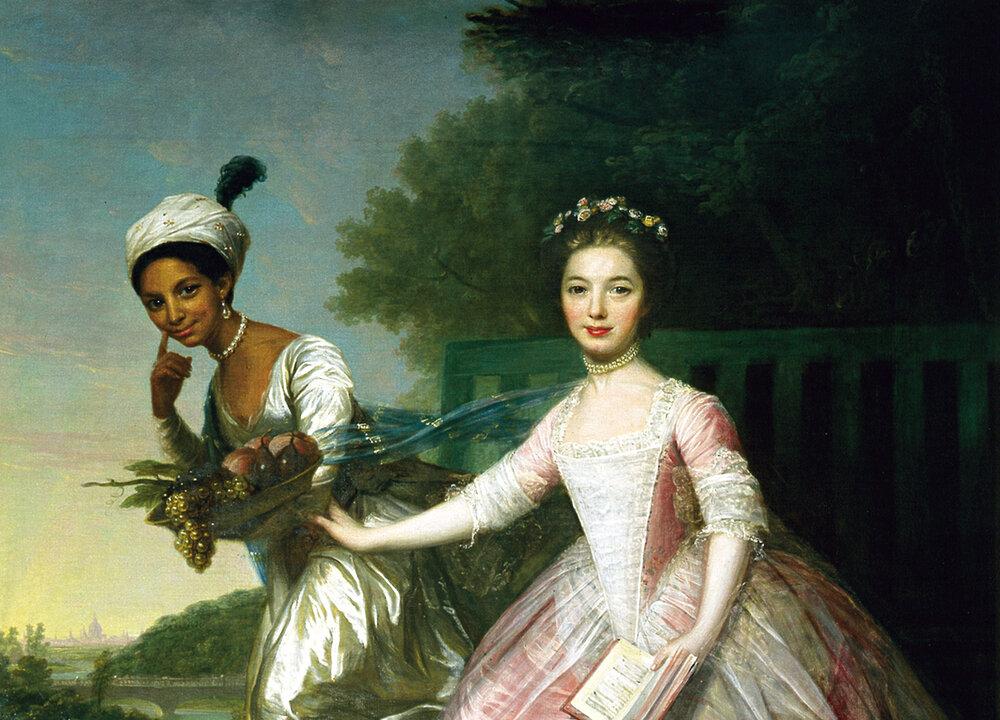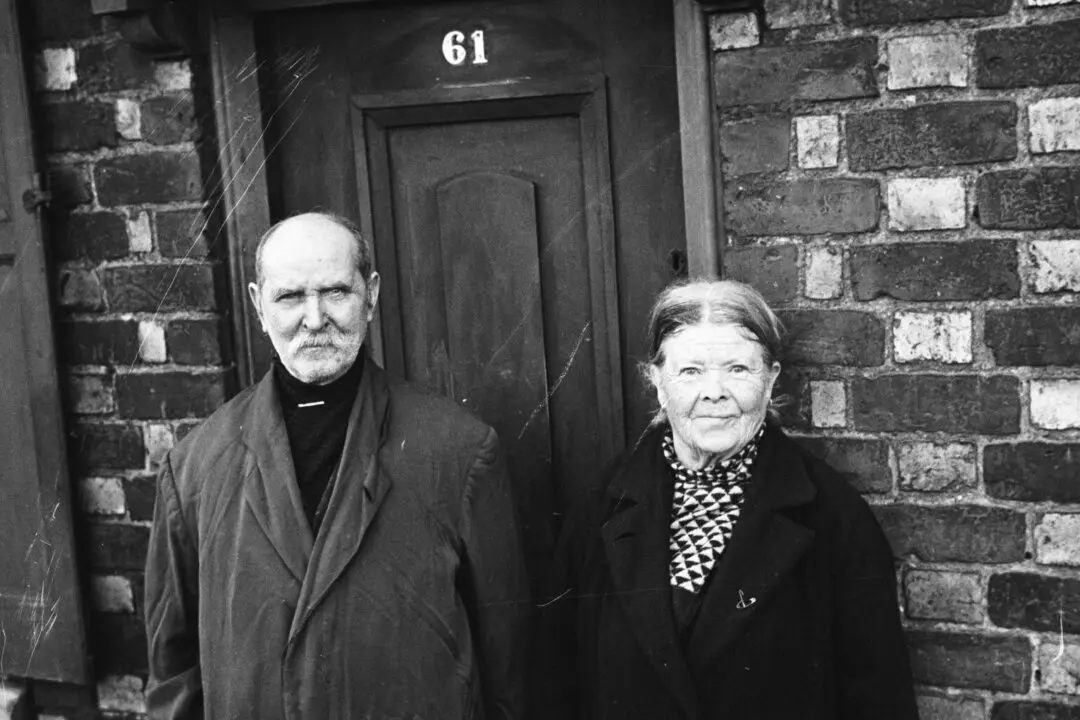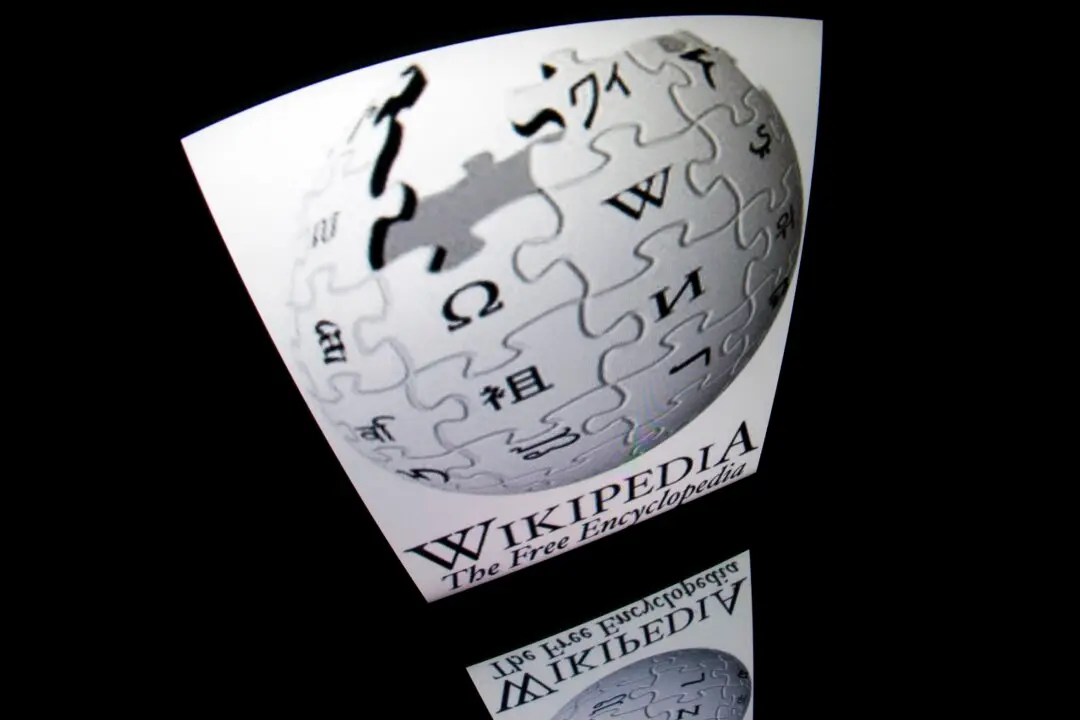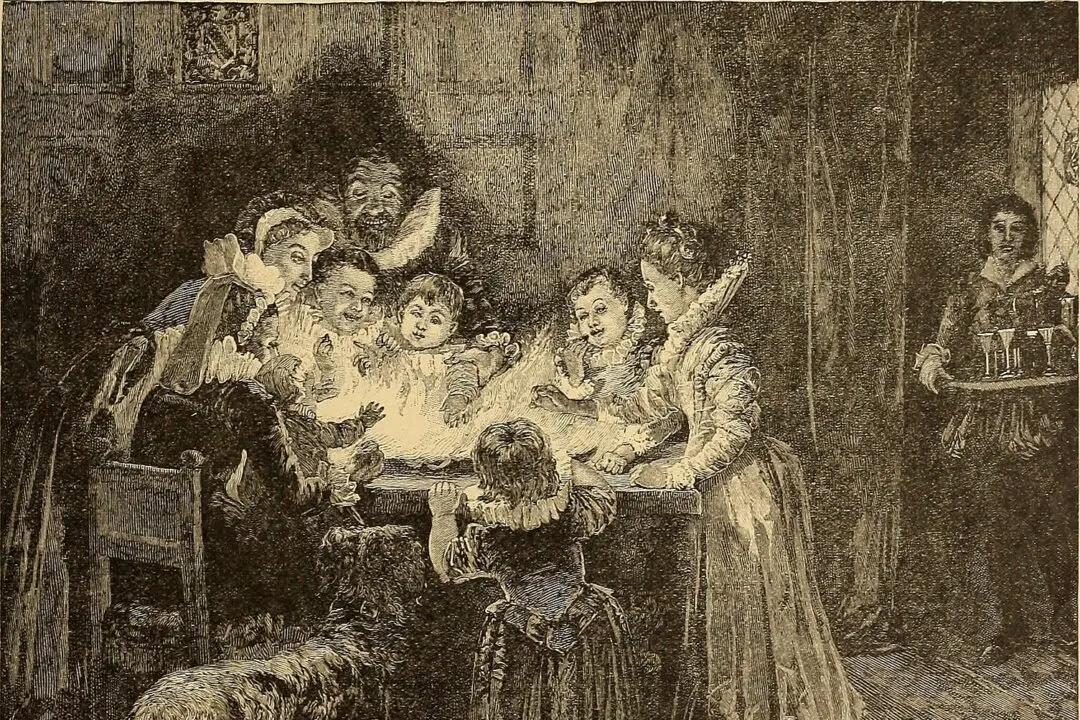Hanging in Scone Palace in Perth, Scotland is an unusual portrait. The 1779 painting by David Martin depicts two young aristocratic women clothed in finery. Their pearls, flowers, and dresses gleam against a dark background of vegetation, with a peaceful lake and manor house visible in the distant haze.
The painting’s unusual because one of the ladies is of mixed race and positioned in an odd pose, as though she’s hurrying past the other woman—her white cousin, Lady Elizabeth Murray—while pointing to her own cheek and gazing toward the onlooker with a kind of knowing smile.






